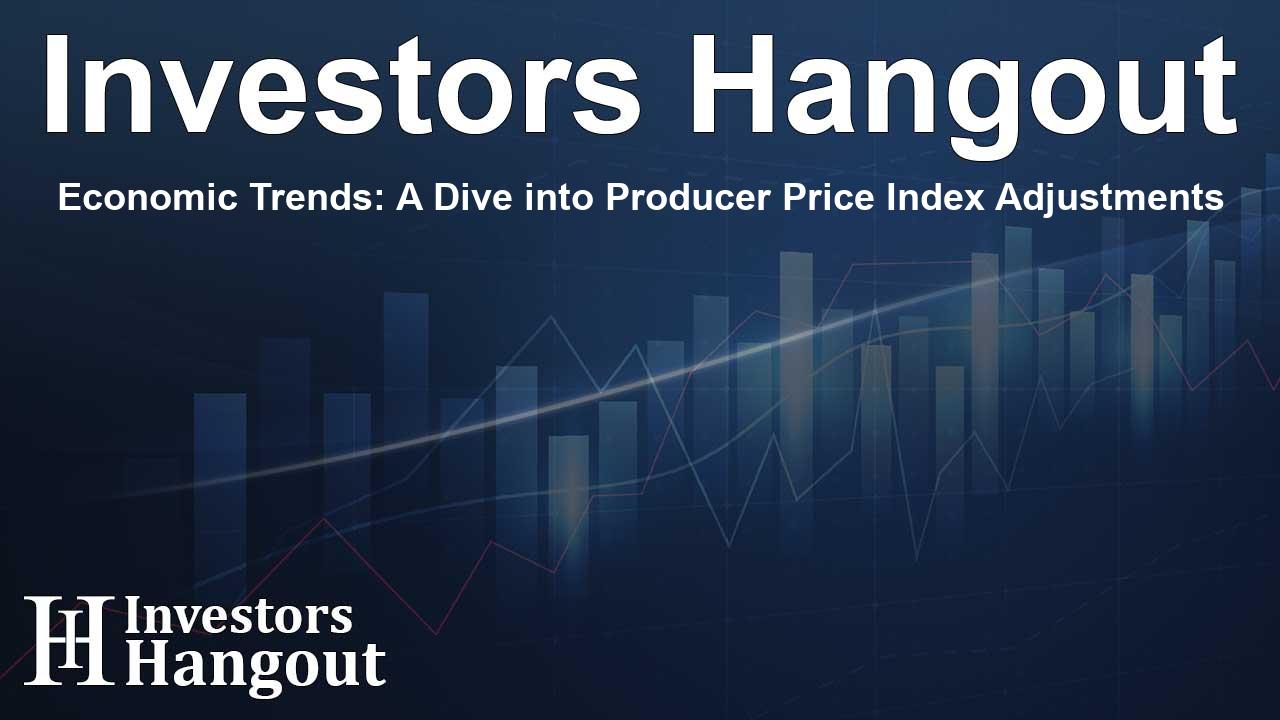Economic Trends: A Dive into Producer Price Index Adjustments

Understanding Recent Trends in Producer Price Index
Recent economic reports indicate a noticeable easing of price pressures faced by U.S. producers in August. This development marks the slowest year-over-year increase since earlier months and reveals insights into the current economic climate. The Producer Price Index (PPI) data released has shown a sharper-than-anticipated deceleration, while core inflation metrics have stabilized. This trend aligns closely with the consumer inflation insights released just a day prior, providing a fuller picture of the economic landscape.
Detailed Insights from the August PPI Report
The headline Producer Price Index for final demand displayed a notable slowdown, coming in at 1.7% year-over-year for August, down from a revised 2.1% in July. Interestingly, this figure fell just short of the expectations that economists had set at 1.8%, surveying their forecasts through various economic tracking platforms.
Key Indicators of the PPI
- On a month-to-month basis, the PPI rose by 0.2%. This increase not only surpassed July’s adjusted flat reading but also exceeded the anticipated 0.1% growth.
- Core PPI, which excludes volatile food and energy prices, remained unchanged at 2.4% year-over-year in August. This was slightly lower than the market's forecast of 2.5%.
- On a month-over-month basis, core PPI showcased an improvement with a rise of 0.3%, bouncing back from a previous contraction of 0.2% and outperforming predictions that estimated a 0.2% increase.
Analyzing the Changes in Unemployment Claims
Shifting gears to the labor market, the latest data points to a slight uptick in initial jobless claims, which is in line with economist expectations. This reflects a stable labor market despite minor fluctuations.
Latest Unemployment Claims Statistics
- For the week ending on a recent date, initial jobless claims rose by 3,000, culminating in a total of 230,000 claims. This matched the forecasts set by analysts.
- The four-week moving average for these claims saw a slight increase, rising from 230,250 to 230,750, which helps to smooth out any weekly oscillations.
- Moreover, continuing claims that track individuals still relying on unemployment benefits after their initial claims went up by 5,000, hitting a total of 1.85 million, aligning with projections.
Economic Analysis and Future Outlook
As these figures unfold, economists and market analysts alike will scrutinize the implications of the slowdown in the PPI, particularly regarding inflationary pressures and consumer spending habits. The relationship between producer prices and consumer behavior is pivotal for predicting the course of economic growth and stability.
Conclusion
The latest reports on the Producer Price Index and unemployment claims provide a window into the economic environment, where sluggish price growth may suggest a cooling off in inflation, while job claims being in sync with predictions indicates a resilient labor market. Stakeholders, from investors to policymakers, will find these trends essential in shaping future economic strategies and decisions.
Frequently Asked Questions
What does a PPI of 1.7% indicate?
A PPI of 1.7% suggests that producers are experiencing a slower rate of inflation compared to previous months, indicating potential stabilization in prices.
How do fluctuations in PPI impact consumers?
Fluctuations in PPI affect manufacturing costs and can eventually influence consumer prices, impacting purchasing power and overall economic activity.
Why is core PPI important?
Core PPI is important because it strips out volatile categories like food and energy, providing a clearer picture of underlying inflation trends.
What trends in unemployment claims suggest?
Trends in unemployment claims can indicate the health of the job market, with rising claims possibly signaling economic distress or transitions within various sectors.
How do these economic indicators influence investment decisions?
Investors closely monitor these indicators to gauge economic conditions, helping them make informed decisions regarding asset allocation and risk management.
About Investors Hangout
Investors Hangout is a leading online stock forum for financial discussion and learning, offering a wide range of free tools and resources. It draws in traders of all levels, who exchange market knowledge, investigate trading tactics, and keep an eye on industry developments in real time. Featuring financial articles, stock message boards, quotes, charts, company profiles, and live news updates. Through cooperative learning and a wealth of informational resources, it helps users from novices creating their first portfolios to experts honing their techniques. Join Investors Hangout today: https://investorshangout.com/
Disclaimer: The content of this article is solely for general informational purposes only; it does not represent legal, financial, or investment advice. Investors Hangout does not offer financial advice; the author is not a licensed financial advisor. Consult a qualified advisor before making any financial or investment decisions based on this article. The author's interpretation of publicly available data shapes the opinions presented here; as a result, they should not be taken as advice to purchase, sell, or hold any securities mentioned or any other investments. The author does not guarantee the accuracy, completeness, or timeliness of any material, providing it "as is." Information and market conditions may change; past performance is not indicative of future outcomes. If any of the material offered here is inaccurate, please contact us for corrections.